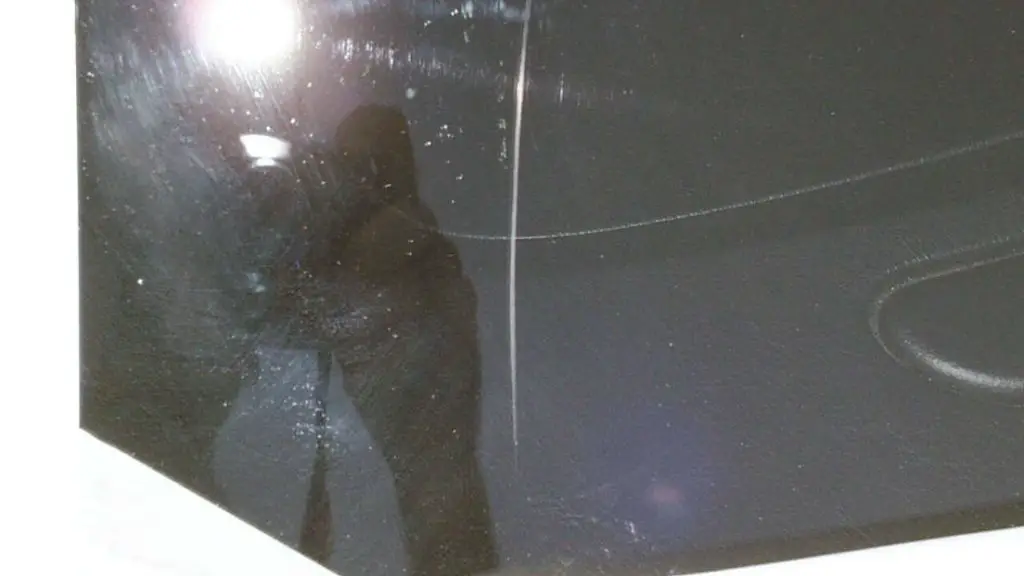The question of whether cat claws can scratch glass surfaces like windows or tables is one that many cat owners ponder. On one hand, glass seems like an impenetrable surface. On the other hand, cat claws are sharp instruments that can cause damage under the right circumstances.
In this article, we’ll take an in-depth look at the anatomy of cat claws, the physics behind scratching, different types of glass, and evidence of real-world scratching. We’ll also provide tips on preventing scratches and examine options for more scratch-resistant glass. Our goal is to thoroughly cover the topic and provide cat owners with knowledge to understand the complex interactions between cat claws and glass.
Anatomy of Cat Claws
A cat’s claws are complex structures made up of bone, tendons, muscles, nerves and thick keratinous tissue. They are located on the end of each toe and attached to the distal phalanx bone. Each claw is composed of a hard outer layer called the unguis, and a softer inner layer called the subunguis. The outer layer is made of strong keratin that protects the bone underneath. This is the same material that makes up human fingernails. The shape of the keratin shield allows cats to grab onto surfaces and helps them climb.
Underneath the hard outer claw, the subunguis acts as a cushion and shock absorber. It also assists with traction and gripping ability. The claws are attached to the end of the toes by ligaments, tendons and muscles. Cats have an ability to extend and retract their claws using these muscular structures. When flexed, the claws spring out and allow cats to grip surfaces for climbing, scratching and hunting prey. When retracted, the claws are safely tucked away, preventing wear and enabling silent stalking.[1]

Factors That Determine Scratching Ability
A cat’s ability to scratch and potentially damage glass depends on several key factors:
The sharpness of their claws is one major determinant. Cats sharpen their claws by scratching on rough surfaces. Sharper claw tips can exert more pressure on glass and cause deeper scratches. Declawed cats or cats with blunted claws are less likely to scratch glass.
The size and strength of the cat also plays a role. Larger, muscular cats can apply more force when scratching. Small kittens are generally incapable of scratching most glass. Adult cats typically have greater scratching power.
Not all glass is the same. Tempered glass like that used in phone screens is very resistant to scratches. But softer types of glass used in windows and household objects are more prone to scratching. The hardness and durability of the specific glass surface makes a difference.
In summary, cats with sharp claws, especially larger adult cats, are most capable of inflicting scratches on softer types of glass through determined scratching. But scratch-resistant glass is unlikely to show damage from even the toughest cat.
Physics of Scratching Glass
At the microscopic level, cat claws are able to apply enough force to deform the surface of glass and cause scratches. Glass is an amorphous solid that lacks long-range order in its atomic structure. This makes it susceptible to permanent deformation when a localized force is applied. According to research, “surface scratches are formed by plastic deformation when the imposed strain exceeds a critical value.”[1] When a cat’s claw tip presses against and drags across the glass surface, the claw tip exerts high contact pressure in a very small area. This pressure from the claw exceeds the yield strength of the glass surface, causing plastic deformation that scrapes away glass material to form a scratch.

Additionally, the sharpness of a cat’s claw enhances its ability to concentrate force and scratch glass. The narrow tip of a cat’s claw behaves like a “cutting wedge” that localizes pressure and penetrates the glass surface, gouging out material.[2] Harder glass surfaces like tempered glass have higher scratch resistance. But a cat’s claws can still generate enough localized pressure to exceed the threshold for plastic deformation and cause scratching.
Evidence of Scratched Glass
There are a few examples online of cats managing to scratch glass surfaces. However, these tend to be rare occurrences that require specific circumstances. According to research by the blog Cat Bandit, the hardness of most glass used in homes and furnishings is significantly higher than a cat’s claws, making it very difficult for them to scratch [1].
One example shared on Reddit shows light scratches caused by a cat persistently scratching the same spot on a glass table over time. The poster attributes it to their cat being obsessed with that particular area [2]. Another example is a cat scratching the glass pane of a door to get outside. But the consensus is that it would take significant effort for a cat to put deep gouges in most glass.
Overall, evidence of cats scratching glass exists but is relatively uncommon. Specific circumstances like softer glass, persistence, and determination can lead to light scratches over time. But in general, cat claws do not pose a major risk of scratching most household glass.
Preventing Glass Scratches
There are several methods to discourage your cat from scratching glass surfaces in your home:
- Cover the glass with self-adhesive plastic, contact paper or window film to create an unappealing surface for scratching. Ensure any adhesives will not damage the glass when removed.
- Apply double-sided tape, aluminum foil or upside-down vinyl carpet runners along edges and potential scratch zones. Cats dislike the texture on their paws.
- Use deterrent sprays containing citrus or lavender oils around glass, which cats find unappealing. Reapply frequently.
- Place scratching posts, corrugated cardboard or sisal mats on either side of glass surfaces to redirect scratching instincts.
- Consider installing acrylic or polycarbonate sheets instead of glass where scratching is an issue. These materials are more resistant to cats’ claws.
- Trim your cat’s claws regularly to blunt the tips and reduce potential damage from scratching.

Ensuring your cat has adequate opportunities and attractive alternatives for scratching is key. Provide multiple scratching posts around the home and reward use of appropriate surfaces.
Types of Glass More/Less Prone to Scratching
Different types of glass have varying levels of scratch resistance. Here’s an overview:
Tempered Glass
Tempered glass is treated with heat or chemicals to increase its strength. According to Corning, tempered glass can be up to 4-5 times stronger than annealed glass. However, it is still prone to scratches from sharp objects like cat claws.
Acrylic Glass
Acrylic glass, also known as plexiglass, is made from plastic. It tends to be more flexible and scratch-resistant than real glass. Thick acrylic sheets are unlikely to be scratched by cat claws.
Coated Glass
Coated glass has a layer added to improve durability and scratch resistance. Gorilla Glass by Corning uses a scratch-resistant ion-exchange process. Gorilla Glass Victus is advertised as 2x more scratch resistant than competitive aluminosilicate glasses.
Scratch-Resistant Glass Options
There are a few innovative products designed specifically to resist cat scratches on glass surfaces. One option is Cat Claw deterrent window film. This clear, self-adhesive film can be applied to existing glass windows and doors. It uses a patented scratch-resistant coating that is designed to withstand repeated scratching from cat claws. The film is transparent while also making glass more shatter-resistant.
Another product is Orr anti-scratch window film. This optically clear film can protect glass from abrasions caused by pets. It uses scratch-resistant polymers to protect against claws. The film is also designed to reduce UV rays and control heat/glare. It can be professionally installed on windows and doors.
There are also supposed to be new innovations in strengthened glass designed specifically to resist cat scratches. For example, chemically strengthened glass is said to be over 4 times more scratch resistant than traditional glass. It undergoes an ion-exchange process to compress the glass surface. However, more research may be needed to confirm its effectiveness against determined feline scratching.
What to Do if Your Cat Scratches Glass
If your cat has already scratched your glass windows, doors, or furniture, there are a few options to repair or conceal the damage:

Repairing scratches: For shallow scratches, try using toothpaste or baking soda and water as a gentle abrasive polish to buff out scratches (source). Use circular motions with a soft cloth. For deeper scratches, you may need a commercial glass scratch removal product.
Replacing glass: For deep gouges that cannot be repaired, the glass pane may need replacement. This likely requires hiring a professional to remove and install the new glass.
Covering scratches: If the scratches are mainly cosmetic, you can apply window film or tinting to conceal them. This provides a transparent barrier over the glass to hide superficial scratches.
Prevention is ideal, so be sure to trim your cat’s claws regularly and provide ample scratching posts and surfaces to deter them from damaging glass furnishings in your home.
Conclusion
In summary, cat claws are capable of scratching glass due to their sharp points and tough keratin composition. The likelihood of scratching depends on factors like the force applied, thickness of the glass, and type of glass. Scratches are more likely on thin, soft glass types like window panes. While scratch-resistant options like tempered or laminated glass are more durable, they can still be damaged under enough force.
To prevent cat scratches, use scratching posts, train your cat to avoid glass, or apply protective films. Check glass surfaces routinely for early signs of damage. Consider glass types designed for impact and scratch resistance if replacing windows or tables. With vigilance and early intervention, cat owners can enjoy their feline friends while maintaining beautiful glass surfaces and windows.

